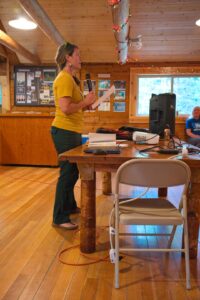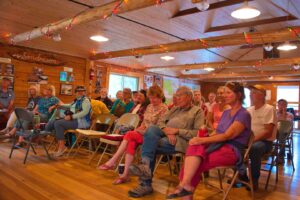Category Archives: Photos & Images
The heartbeat of wild places
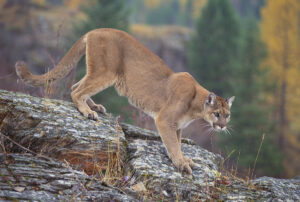
A fascinating article on mountain lions with a North Fork focus and some excellent photos . . .
Populations of big cats are declining globally because of habitat loss and poaching, but mountain lion numbers are increasing. They are the most successful large cats in the Americas and live from the Tierra del Fuego archipelago in South America, north to Canada’s Northwest Territories.
Jim Williams, author, biologist and former regional director of Montana Fish, Wildlife and Parks, says Montana has two to four times as many lions as wolves on the landscape. More mountain lions live in Glacier National Park than Yellowstone proper, Williams says, due to the high white-tailed deer population in Glacier, and wolf packs in Yellowstone have displaced mountain lions from the high, open plains to the northern region of the park where deep canyons and steep slopes are prevalent. “There are 4.9 resident adults per 100 square kilometers in Glacier,” he said. “That’s the highest we’ve detected in Montana.”
The story below happened in Glacier, but could have easily occurred in Greater Yellowstone or anywhere carnivores face off in conflict.
Extraordinary hope: a conversation with Roger Sullivan
Katy Spence of the Montana Environmental Information Center (MEIC) recently published a wonderful interview with Roger Sullivan, who happens to be a board member of both MEIC and our own NFPA. Roger has also been involved with the NFPA from the very beginning.
This piece was originally published in the MEIC’s quarterly Down to Earth publication and is used here with permission. To see the article in full context and with better formatting, you can download the entire newsletter here.

MEIC is fortunate to have a number of friends and allies that we can call upon for support, encouragement, or assistance. This year, we feel especially fortunate to know our board member, mentor, and friend Roger Sullivan. Roger has a deep history in Montana environmental law and justice. For more than 35years, Roger has advocated for Montanans and our constitutional right to a clean and healthful environment. He has successfully represented dozens of Libby residents sickened by exposure to asbestos from the W.R. Grace mining operations. Most recently, Roger was one of the attorneys in the landmark youth climate trial Held v. State of Montana.
Roger has served on MEIC’s board multiple times and has represented MEIC and other public health and environmental groups in innumerable cases. He tirelessly advises and mentors young environmental lawyers in the state, including many of whom have worked with (or still work with) MEIC. Continue reading Extraordinary hope: a conversation with Roger Sullivan
Two Kreck/Fields Scholarship Winners Announced for 2022
The NFPA Awards Committee found the applicant pool for this year’s Kreck/Fields Scholarship so strong they decided to award two scholarships . . .
Jacob Bretz
Jacob Bretz is a Masters Student at University of Montana in the field of Environmental Philosophy. Jacob says “ The environmental problem is the existential issue of our time.”
Najifa Farhat
Najifa Farhat is a Masters student at the University of Montana in Journalism, Environmental Science and Natural Resources. Najifa, a professional journalist reporting on environmental issues in Bangladesh prior to coming to Montana told us “my passion for writing and advocacy of issues related to nature, earth and the environment brought me into this profession.”
Beyond the border: A tale of two rivers
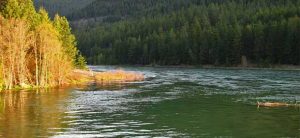
One of the North Fork Preservation Association’s founding goals was fighting resource extraction upstream in the Canadian Flathead Valley. This article provides a vivid illustration of what could have happened in the transboundary Flathead and what did happen in the Elk/Kootenai watershed just to our west . . .
On a recent late-August morning, buzzing above the peak-studded North Fork Flathead River Valley in a single-engine Cessna, the familiar summits of Glacier National Park dominated the view to the east, revealing a sky-high harbor of sapphire-green amphitheaters filigreed with waterfalls and bejeweled with cerulean lakes, representing a sliver of the one-million-acre ecosystem permanently protected from the intrusions of industry.
On board the six-seater plane were Erin Sexton, a senior research scientist with the University of Montana’s Flathead Lake Biological Station, and Richard Janssen, head of the Confederated Salish and Kootenai Tribes’ (CSKT) Natural Resource Department, as well as a trio of journalists and pilot Bruce Gordon, founder of the nonprofit EcoFlight, which for more than three decades has worked to illuminate critical environmental issues on western landscapes.
Cruising amid calm, clear skies, Gordon’s flight plan called for an aerial tour of the North Fork Flathead River Valley girding Glacier Park and spanning the U.S.-Canada border, where mining and energy development has been banned for years, before crossing over into the Elk and Kootenai (spelled Kootenay in Canada) River Basin south of Fernie, British Columbia (B.C.), below which a chain of open-pit coal mines is responsible for leaching harmful pollutants into Montana.
[Update: September 30] See also this photo-heavy article from the National Wildlife Federation about the same flight: An Eye in the Sky: Transboundary Mining.
‘Grizzlies and Us’ series worth the read
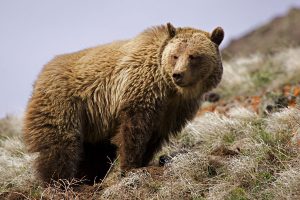
Wow! Lee Enterprises, owner of a number of newspapers in this part of the country, including the Missoulian, recently wrapped up their “Grizzlies and Us” project, a ten-part series consisting of some 22 individual articles examining “…the many issues surrounding the uneasy coexistence of grizzlies and humans…”
Saga of Monica and her cubs ends tragically
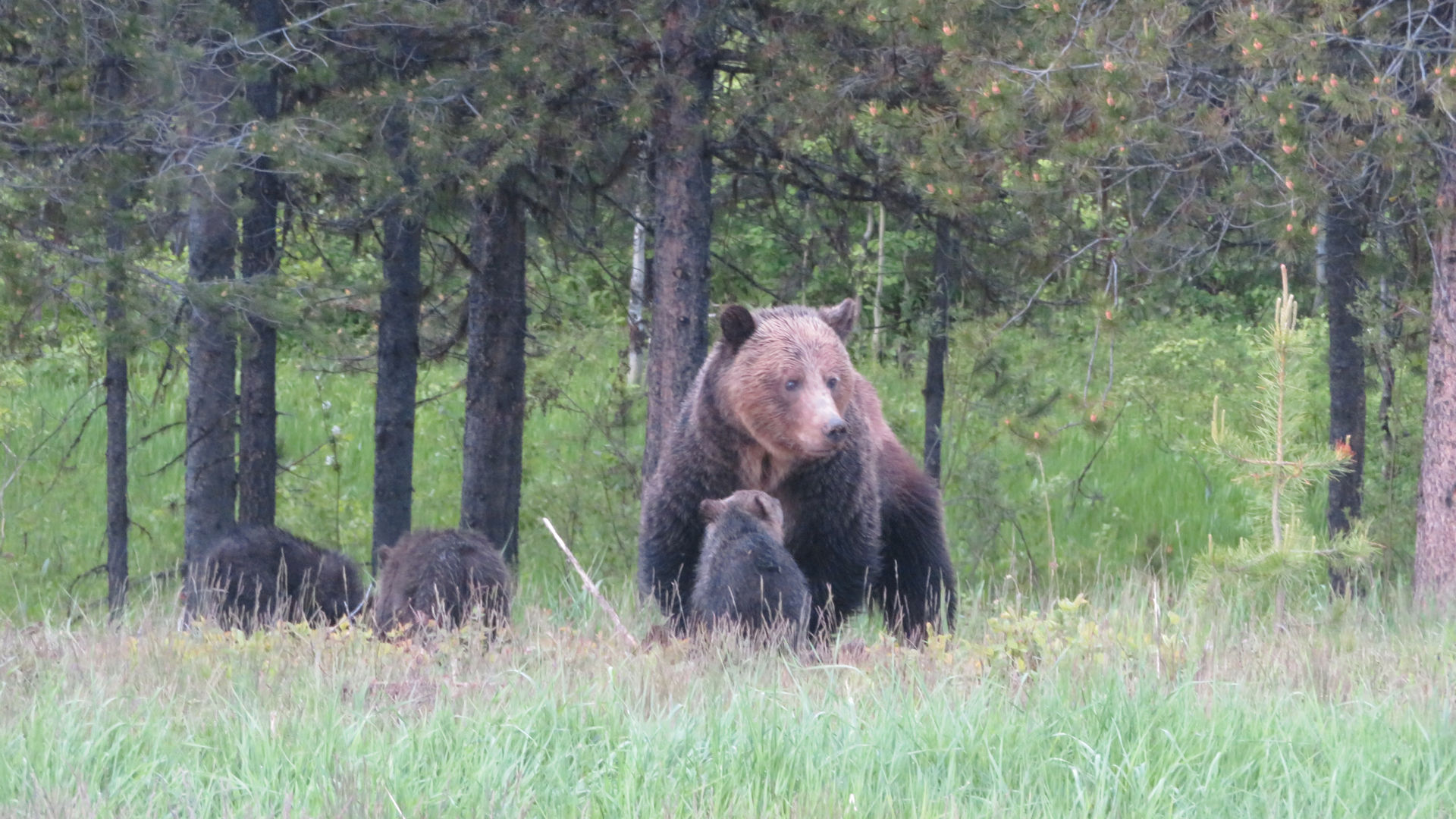
Here’s the latest from Tim Manley on the tragic saga of Monica and her three cubs. It was posted to Facebook in the early morning hours of September 6th. Scroll to the end of this post for a photo gallery . . .
Update on the grizzly bears… well, it was a difficult week. One that I would rather not repeat. I have read some of the comments and I understand everyone’s concerns and feelings. I think it is important to put a few things into context so everyone knows what transpired.
I am not going to mention names or locations but I think most people have heard about some of the locations where these incidents occurred. We tried to prevent further conflicts from occurring, but as you will see, this family group of bears were very food-conditioned and the property damage was extensive and knowing what they were going to do next was difficult to predict.
The adult female grizzly bear was known as Bear #418 or as we called her “Monica”. Based on the annual cementum of her premolar, her age was 20 years old. She was originally captured in 2004 as a sub-adult on the east side of the mountains at the site of a calf depredation. They didn’t know if she was the bear that killed the calf but the decision was made to relocate her to the west side of Glacier Park. She remained in the North Fork for 17 years and spent a majority of her time in Glacier Park, but denned in Hay Creek and on Cyclone.
Continue reading Saga of Monica and her cubs ends tragically
Enjoy those huckleberries? Thank a bumblebee
A very interesting article by Chris Peterson of the Hungry Horse News about the importance of bumblebees to the huckleberry crop . . .
The next time you grab a handful of huckleberries, you just might want to thank the bees — bumblebees that is. Research by Montana State University and the U.S. Geological Survey has found that there’s about six species of bumblebee and one Andrenidae species of bee that pollinate Montana’s huckleberry bushes.
Prior to 2014, researchers weren’t sure what insects exactly were pollinating the iconic bush, USGS scientist Tabitha Graves said during a talk last week at the Flathead Chapter of the Montana Native Plant Society.
The bees are critical to berry production. Experiments in the field have shown that bushes that are isolated from bees make a fraction of the fruit compared to plants that are pollinated by their fuzzy friends.
Two lynx having election year debate
This one is just for fun . . .
All the world’s forests in one day
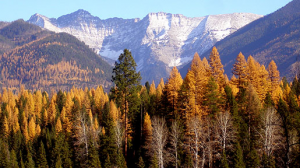
March 21 was International Day of Forests. On that occasion, Planet posted some very interesting satellite imagery . . .
Forests do a great deal of good for the planet — from purifying our air, to providing habitat for wildlife, protecting watersheds, preventing soil erosion, and more.
For International Day of Forests this year, we wanted to celebrate the beauty and magnitude of forests across the entire globe. So we embarked on downloading imagery of all forests captured by our fleet of Dove satellites over the course of a single day.






